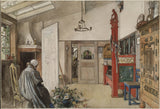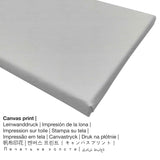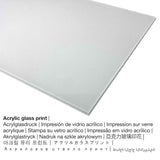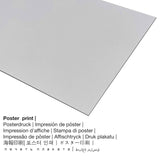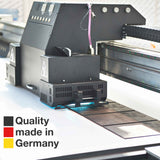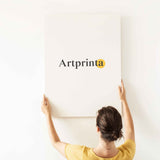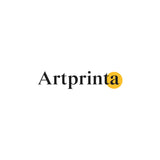Carl Larsson - Ụlọ ihe nkiri. Site na Ụlọ (26 watercolor) - ọmarịcha nka
Ụtụ gụnyere. Mbupu gbakọrọ na ndenye ọpụpụ.
Ozi nkowa mgbakwunye by the museum (© - nke Nationalmuseum Stockholm - www.nationalmuseum.se)
English: Carl and Karin Larsson combined new design with old traditions. Practicality dictated their interior design, but it was equally important that furniture and objects form an attractive harmony. This ideal was also propagated by others, including Ellen Key, who advocated homes that were in a new and light style, in her essay “Skönhet för alla” (Beauty for All) in 1899. The Larssons moved to Lilla Hyttnäs, a house in Sundborn, in the summer of 1889. Here, Carl and Karin together created the interiors that made their home famous. Karin designed the furniture and textiles, which she embroidered and wove. A studio was fitted up in one of the hallways. It features many eye-catching details, including the funny man crowning a column. When a larger studio extension was added, this room became a workshop for the whole family. The interiors of the Larsson home were characterised by rural simplicity. Nevertheless, every detail was carefully designed, with influences from England, Scotland and Japan. The kitchen, which was first and foremost a place for household chores, did not display the same modern interior style and comfort as the rest of the house Hos Carl och Karin Larsson möttes ett nytt formspråk och gammal tradition. De praktiska ändamålen styrde inredningen, men lika viktigt var att möblerna och föremålen samspelade i en harmoni. Dessa idéer förespråkades också till exempel av Ellen Key. Hon pläderade för nya och ljusa hem i sin uppsats ”Skönhet för alla” från 1899. Larssons flyttade till huset Lilla Hyttnäs i Sundborn sommaren 1889. Carl och Karin skulle där tillsammans skapa den inredning som gjorde hemmet berömt. Karin formgav både möbler och textilier som hon broderade och vävde. En av tamburerna inreddes tidigt till ateljé. Där finns rikligt av iögonfallande detaljer, till exempel den lustige figuren på krönet till stolpen. När en större ateljé byggdes blev detta rum en verkstad för hela familjen. Inredningarna i det Larssonska hemmet gav sken av en lantlig enkelhet. Samtidigt var allt noga genomtänkt och influenserna hämtades bland annat från England, Skottland och Japan. Köket som främst var en plats för hushållsarbete och matlagning hade dock inte samma moderna inredningsstil och bekvämlighet som de övriga rummen.
Ngwaahịa a
Ihe osise a na-akpọ Ụlọ ihe nkiri ahụ. Site na Ụlọ (agba mmiri 26) was made by the artist Carl Larsson. The original measures the size: Ogologo: 32 cm (12,5 ″); Obosara: 43 cm (16,9 ″) Ekebere: Elu: 38 cm (14,9 ″); Obosara: 53 cm (20,8 ″); Omimi: 4 cm (1,5 ″). Ọrụ nka a bụ nke mkpokọta National Museum nke Stockholm. Site n'ikike nke: Nationalmuseum Stockholm na Wikimedia Commons (public domain license).Creditline of the artwork: . On top of that, alignment is in landscape format ya na oke akụkụ nke 3: 2, nke pụtara na ogologo bụ 50% ogologo karịa obosara.
Họrọ ihe ị họọrọ
For every product we offer a range of different materials and sizes. Pick your favorite size and material between the subsequent options:
- Poster (akwa akwa akwa): The Artprinta poster is a UV printed flat cotton canvas paper with a fine surface structure, that reminds the actual artwork. Please keep in mind, that depending on the absolute size of the poster print we add a white margin of approximately 2-6cm round about the print in order to facilitate the framing.
- Kwaaji: The canvas print, not to be confused with an artwork painted on a canvas, is a digital image applied directly on cotton canvas material. A canvas creates the sculptural effect of three-dimensionality. Canvas Prints have the advantage of being low in weight, which implies that it is easy to hang your Canvas print without the help of any wall-mounts. Canvas prints are suited for all kinds of walls.
- Mbipụta nke aluminom: This is a metal print made on aluminium dibond material with an outstanding effect of depth. A direct Direct Print on Aluminum Dibond is your ideal start to art prints with aluminum. For your Aluminium Dibond option, we print the chosen artpiece right on the surface of the aluminum composite. The bright and white parts of the artwork shimmer with a silky gloss but without any glare. The colors of the print are bright and luminous in the highest definition, the fine details of the print are clear and crisp, and you can literally perceive the matte appearance of the fine art print.
- Mbipụta enyo acrylic: A glossy print on acrylic glass, often referenced as a print on plexiglass, will turn the original artwork into magnificient wall décor. Your own copy of the artwork is printed thanks to modern UV direct printing machines. This creates intense and impressive colors. Our acrylic glass protects your selected art replica against sunlight and heat for many more years.
Tebụl ozi omenkà
| Aha onye nka: | Carl Larson |
| Aha ndị ọzọ: | Larsson Carl, carl Larsson, Larsson Carl Olof, Carl Olof Larsson |
| okike onye nka: | nwoke |
| Obodo onye nka: | Swedish |
| Ọrụ: | cartoonist, drawer, artist, illustrator, watercolourist, painter, designer |
| Obodo obibi: | Sweden |
| Afọ ọnwụ: | 66 afọ |
| Afọ ọmụmụ: | 1853 |
| Ebe amụrụ onye: | Stockholm, obodo Stockholm, Sweden |
| Afọ ọnwụ: | 1919 |
| Ebe ọnwụ: | Falun, Dalarna, Sweden |
Ozi ndabere gbasara nka nka pụrụ iche
| Aha ọrụ nka: | "The Studio. Site A Home (26 watercolor)" |
| Nhazi: | sere |
| Akụkụ nke ihe osise izizi: | Ogologo: 32 cm (12,5 ″); Obosara: 43 cm (16,9 ″) Ekebere: Elu: 38 cm (14,9 ″); Obosara: 53 cm (20,8 ″); Omimi: 4 cm (1,5 ″) |
| Egosiputara na: | National Museum nke Stockholm |
| Ebe ngosi nka: | Stockholm, Obodo Stockholm, Sweden |
| website: | www.nationalmuseum.se |
| Ụdị ikike nka: | ngalaba ọha |
| Site n'aka: | Nationalmuseum Stockholm na Wikimedia Commons |
Nkọwa ngwaahịa ahaziri ahazi
| Bipụta ụdị ngwaahịa: | nka nka |
| Usoro mmeghari: | dijitalụ mmeputakwa |
| Produzọ mmepụta: | Mbipụta UV ozugbo |
| Ihe ngosi: | German mmepụta |
| Ụdị ngwaahịa: | na mmepụta ihe |
| Eji ngwaahịa a chọrọ: | art mmeputakwa gallery, ụlọ imewe |
| Nhazi: | nhazi odida obodo |
| Ụdị anya: | 3: 2 - ogologo: obosara |
| Pụtara nha akụkụ: | ogologo bụ 50% ogologo karịa obosara |
| Nhọrọ dị: | akwụkwọ mmado (akwụkwọ kwaaji), mbipụta enyo acrylic (nke nwere ezigbo mkpuchi iko), mbipụta ọla (aluminium dibond), mbipụta kwaaji |
| Canvas dị n'elu ihe nrịbama (mbipụta kanvas) nha dị iche iche: | 30x20cm - 12x8", 60x40cm - 24x16", 90x60cm - 35x24", 120x80cm - 47x31", 150x100cm - 59x39" |
| Mbipụta iko acrylic (nwere ezigbo mkpuchi iko) dị iche iche: | 30x20cm - 12x8", 60x40cm - 24x16", 90x60cm - 35x24", 120x80cm - 47x31", 150x100cm - 59x39" |
| Nhọrọ nha nke akwụkwọ mmado (akwụkwọ kwaaji): | 60x40cm - 24x16", 90x60cm - 35x24", 120x80cm - 47x31" |
| Nhọrọ nha mbipụta aluminium dibond: | 30x20cm - 12x8", 60x40cm - 24x16", 90x60cm - 35x24", 120x80cm - 47x31" |
| ụba: | mmeputakwa na-enweghị isi |
Ozi dị mkpa: We try in order to depict our products as accurately as possible and to illustrate them visually in our shop. Nonetheless, the colors of the printing material, as well as the imprint might vary slightly from the image on the screen. Depending on your screen settings and the quality of the surface, colors can unfortunately not be printed as realisitcally as the digital version depicted here. Bearing in mind that the are processed and printed by hand, there might as well be minor deviations in the motif's exact position and the size.
Nwebiisinka © | Artprinta.com (Artprinta)

